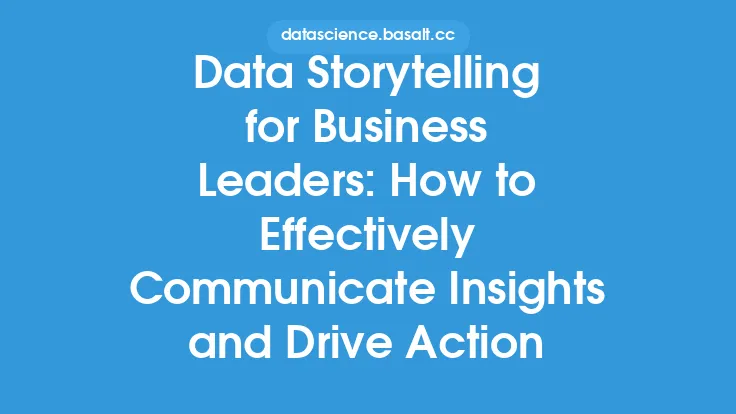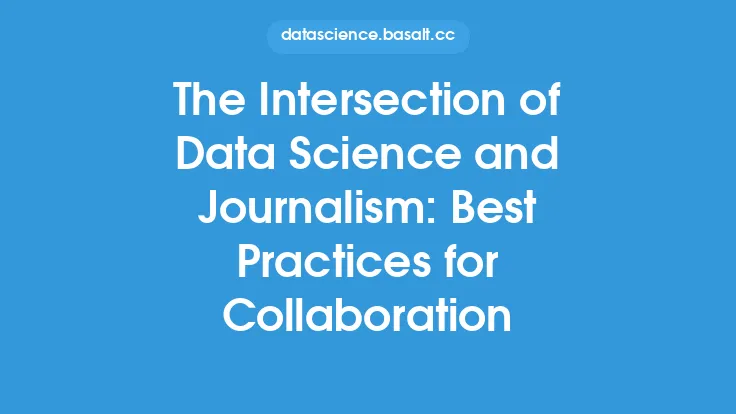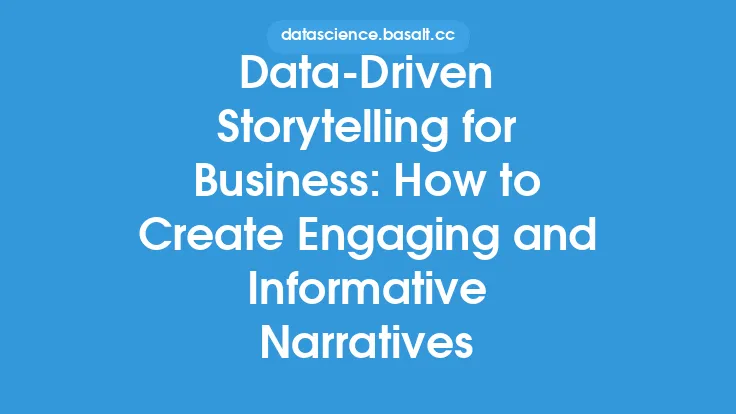In today's data-driven business landscape, the ability to tell compelling stories with data is a crucial skill for professionals looking to inform, engage, and persuade their audiences. Data storytelling is the process of using data to convey insights, trends, and patterns in a way that is easy to understand and relatable. It involves using a combination of data analysis, visualization, and narrative techniques to create a story that resonates with the audience. The goal of data storytelling is to extract insights from data and present them in a way that is actionable, informative, and engaging.
Understanding the Importance of Data Storytelling
Data storytelling is essential in business because it allows professionals to communicate complex data insights in a way that is easy to understand. It helps to bridge the gap between technical data analysis and non-technical stakeholders, enabling them to make informed decisions. Data storytelling also helps to create a shared understanding of the data and its implications, which is critical for driving business outcomes. Furthermore, data storytelling can be used to identify opportunities, optimize processes, and measure the effectiveness of business strategies.
Best Practices for Data Storytelling
To tell compelling business stories with data, there are several best practices to keep in mind. First, it's essential to define a clear purpose and audience for the story. This will help to guide the data analysis and visualization process, ensuring that the story is relevant and engaging for the intended audience. Second, it's crucial to use high-quality data that is accurate, complete, and relevant to the story. Third, data visualization techniques should be used to present the data in a way that is easy to understand and interpret. Finally, the story should be structured in a logical and coherent way, with a clear beginning, middle, and end.
Data Analysis and Visualization Techniques
Data analysis and visualization are critical components of data storytelling. Data analysis involves using statistical and machine learning techniques to extract insights from the data. This can include techniques such as regression analysis, clustering, and decision trees. Data visualization involves using graphical representations to present the data in a way that is easy to understand. Common data visualization techniques include bar charts, line charts, scatter plots, and heat maps. Additionally, interactive visualization tools such as Tableau, Power BI, and D3.js can be used to create dynamic and engaging visualizations.
Crafting a Compelling Narrative
A compelling narrative is essential for effective data storytelling. The narrative should be structured in a logical and coherent way, with a clear beginning, middle, and end. The beginning should introduce the problem or opportunity, the middle should present the data insights, and the end should summarize the key findings and recommendations. The narrative should also be engaging and relatable, using storytelling techniques such as anecdotes, examples, and metaphors to convey the insights. Furthermore, the narrative should be concise and focused, avoiding unnecessary complexity and jargon.
Examples of Effective Data Storytelling
There are many examples of effective data storytelling in business. For instance, a company might use data storytelling to analyze customer behavior and preferences, identifying opportunities to improve customer satisfaction and loyalty. Another example might involve using data storytelling to optimize business processes, such as supply chain management or inventory control. Data storytelling can also be used to measure the effectiveness of marketing campaigns, identifying which channels and tactics are driving the most engagement and conversion.
Technical Considerations
From a technical perspective, data storytelling involves several key considerations. First, it's essential to have a robust data infrastructure in place, including data warehouses, data lakes, and data governance processes. Second, data analysis and visualization tools should be used to extract insights from the data and present them in a way that is easy to understand. Third, data storytelling platforms such as Tableau, Power BI, and D3.js can be used to create interactive and dynamic visualizations. Finally, data storytelling should be integrated into the broader business intelligence and analytics strategy, ensuring that insights are actionable and drive business outcomes.
Common Challenges and Pitfalls
Despite the importance of data storytelling, there are several common challenges and pitfalls to be aware of. First, data quality issues can undermine the credibility of the story, making it essential to ensure that the data is accurate, complete, and relevant. Second, data analysis and visualization techniques can be complex and nuanced, requiring specialized skills and expertise. Third, the narrative should be engaging and relatable, avoiding unnecessary complexity and jargon. Finally, data storytelling should be integrated into the broader business strategy, ensuring that insights are actionable and drive business outcomes.
Future Directions and Trends
The field of data storytelling is rapidly evolving, with several future directions and trends to be aware of. First, the use of artificial intelligence and machine learning techniques is becoming increasingly prevalent, enabling automated data analysis and visualization. Second, the rise of cloud-based data platforms is making it easier to access and analyze large datasets. Third, the use of interactive and dynamic visualization tools is becoming more widespread, enabling users to explore and interact with the data in new and innovative ways. Finally, the integration of data storytelling into the broader business intelligence and analytics strategy is becoming increasingly important, ensuring that insights are actionable and drive business outcomes.





